Episode 23 |
December 9, 2022
In this episode of the Construction Revolution Podcast, we sit down with Nolan Browne of ADL Ventures. ADL Ventures is a California based company developing and deploying new services and products on behalf of critical infrastructure incumbents. The firm is a self-described do-tank, not a think-tank, that delivers results instead of reports. ADL Ventures continues to make large contributions to the construction industry through the ABC Collaborative project. This stands for Advanced Building Construction which refers to innovative retrofit and new construction solutions that combine energy-efficient building decarbonization and streamlined industrialized construction. Tune in to learn how ADL Ventures is changing the way we think about the construction industry.
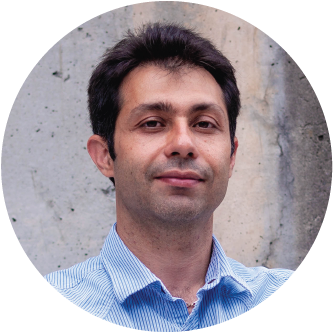
Pouria Ghods
CEO & Co-Founder, Giatec Scientific Inc.

Nolan Browne
Founding Partner, ADL Ventures
Pouria Ghods:
Hello there, and welcome to the Construction Revolution podcast. My name is Pouria Ghods, and here on the show we explore the latest trends, technologies, people, and organizations that are revolutionizing or disrupting the construction industry, and/or changing the way the industry will look tomorrow.
Today on the show I’m speaking with Nolan Browne, the Chairman and Founding Partner of ADL Ventures. Nolan is an innovation expert, entrepreneurial executive, investor, fundraiser and board member specializing in the commercialization of emerging technologies in energy, automotive, technical R&D, and innovation management, who excels at developing first of the kind programs and products and leading the teams of high performing technical business and political professionals. He’s the founder of the Fraunhofer Center for Sustainable Energy Systems at MIT and he holds advanced degrees from MIT and Johns Hopkins University.
ADL Ventures focuses on developing and deploying new services and products on behalf of critical infrastructure incumbents. Nolan, ADL Ventures work closely with RMI and various industry players to develop and initiate the DOE’s ABC Collaborative with the intention of creating means of self-manufacturing jobs, retrofitting millions of homes, and delivering trillions of dollars of values to the US GDP.
Nice to meet you here. Yeah, so, and welcome you to our Construction Revolution podcast today. Can you start with introducing yourself, right? That would be great if you basically give us few minutes introduction, right? So, your background. That would be very interesting for all the listeners also the good way to start this conversation.
Nolan Browne:
Pouria, thanks for having me on. This is a really exciting show and a really exciting topic for me. My name is Nolan Browne. I go by Nole. I started out in … After graduate school, I started out in solar manufacturing, photovoltaics actually. I went from there to found and lead the Fraunhofer Center for Sustainable Energy Systems at MIT, so an applied research center. And we grew that to about 80 people. Thereafter, I came out to Silicon Valley, where I started taking some of the technology that we’d been working on and trying to turn it into startups.
During that time I had a couple breakthroughs, I met a couple friends, and we started thinking about how to change the industrial sectors, like the construction sector, that are notoriously difficult to change. And we thought that we had maybe a new formula for how to do entrepreneurship better, less risky, and with a higher rate of technical transition or adoption by the more conservative large players in the space.
Pouria Ghods:
Can you maybe also tell us more about what you’re doing right now, right? A little bit double-clicking on the current, right? So, especially at ADL Ventures, right?
Nolan Browne:
Yeah, absolutely. Great question. The mission, ADL Ventures is a mission-based venture developer. That means we will build startups and business units for larger corporates. And we choose to do that in the industries that matter for sustainability. So, think of all the industries that emit carbon, those are the industries we go after. Those industries also happen to be what I like to call the change resistant industries. And they’re change resistant by design, right? They’re supposed to be change resistant. You don’t move fast and then break things when you’re in construction.
So, one of our thoughts was, and this happened back in about 2014 to 2016, we were formulating this idea that instead of doing entrepreneurship the heroic way that we were taught to in graduate school, where you have a great idea and you bang your head on the wall until breaks, we thought, well, what if we flip it? And what if we don’t start with we must have this one particular technical solution must succeed? What if we started with a package of problems that a board of directors or a C-level corporation had? Some existential concerns they really wanted to solve, and then back into a startup to solve those problems for them.
Pouria Ghods:
Yeah, smart.
Nolan Browne:
And that really just changes the way you think about the problem definition. It changes your connection to the market. And on day one of your startup, you’re starting with capital from a corporation who also is probably the customer, right? At minimum let’s call it pathfinder for this new venture that you’re on.
Pouria Ghods:
Yeah, no, no, very attractive actually business model. I’ve never heard about that. Very, very smart I would say to basically identify the problem, this is a practical problem from industry, right? And also they could be potential customers for the potential solutions and as well as, so the capital access, right? So, there’s a strategic … Interesting, very interesting business model. Okay.
What is the focus of ADL Ventures? Where you’re at right now, ADL Ventures, right? So, are you basically … You identified your portfolio, right? So, a few companies you are basically helping to grow or you’re still looking for new basic startups, right, joining your portfolio, right? So, yeah, just a little bit more information.
Nolan Browne:
Yeah, absolutely. Just to be clear on who we are. We like to call ourselves venture developers. And so we’re kind of sitting somewhere in the middle of the venture capital community, a traditional venture capitalist who’s just putting money into a project as a financial investor, and the straight up entrepreneur who’s taking the technology and running forward with it towards the investor. We are basically, because we start with the premise of let’s solve a critical problem for this corporate that we work for, once we know what we’re looking for, we find that entrepreneur, that technologist usually. Maybe it’s a technologist and a businessperson. But it’s basically an early stage seed of a team.
And then we’ll say, “Hey, we want to build a company for you. This is what the company should kind of look like. Is this something you’d want to do?” And then ultimately, if they say yes, then we have funding to go out and do that with them. And that funding generally is mostly coming from the corporate that we’re working for.
Pouria Ghods:
That’s very, very interesting model, right? So, as a matter of fact, I was discussing even VCs and PE firm, so over the next five to ten years, right? So, perhaps they’re going to go through some changes, right? In terms of the business model. Some of the lessons learned over the past few years is part of it, right? And also recently news we see in the venture capital market, right? So, yeah, that’s very smart that I guess you are forward thinking or you are ahead of the game from that perspective, right? At least from my perspective, right? This limited information I have from the market change, right? Yeah, congratulations on that.
But maybe there is another program, right? That you are working on, right? So, it’s called ABC Collaborative, right? So, perhaps for our people, our audience, would be interesting to learn a little bit with that. It’s a little bit different I would say, right? In terms of the structure program or business model, but it’s still under the umbrella of ADL Ventures, right? That’s my understanding. But it would be great if you can elaborate on and expand so that, yeah, we can learn a bit more on that.
Nolan Browne:
Absolutely. So, pretty much 90% of my time goes to the construction and advanced construction or advanced off-site construction space. So, what the group does is very much what ADL does. We’re looking to create new ventures in this space. But in order to make a big difference, you also have to play … This is the construction space, as you know, it is a challenging space and there’s lots of moving parts and there’s government actors, regulators, and there’s big corporates. So, we work on a number of public and private partnerships, a number of even straight up DOE-funded initiatives, right? To help advance the construction space.
And the advanced building construction grant from the DOE, I was there relatively early on as they were creating the idea of what they wanted to do a program on. I was kind of providing some advice. And we had thought about how do we take construction to the next level.
ABC does construction as whole. What are advanced materials, advanced building techniques? What are new processes? And also it does some real projects on the ground, where it’s trying to do … We’re especially active in energy efficient retrofit and field testing out in that and actually deploying things in the field.
Where ADL has been doing a lot of work for ABC with the Rocky Mountain Institute is the Advanced Building Construction Collaborative. That really is the bringing together the different industry players with the organizations with the government folks, and then coming up with novel solutions and new pathways forward to advance the industry.
On the ABC, that’s more general than just offsite, that’s offsite and onsite, and that includes new builds and retrofits. But the main thing is energy efficiency for construction. So, I think in the ABC I have my preferences towards offsite construction, that is kind of my favorite child I guess. Although construction in general is a focus for me. But we are on our third year of the five proposal or five year project. And it’s going to fantastically well.
Pouria Ghods:
Awesome. So, yeah, maybe just follow up questions on that, right? So, I saw somewhere on your website that part of your vision basically is to decarbonize the construction industry, right? So, decarbonization, so green aspects and energy efficiency could be a part of that or other means, right? Ways of reducing the carbon footprint of construction industry as a whole, right? Is part of your high level mandate or vision, right? So, yeah, can you a little bit elaborate on that, speak to that, right? Or maybe a few examples, right? So, that how use leveraging ABC Collaborative or maybe ADL Ventures, right? So, working with private big construction company, right? So, identify the problem and how basically you’re trying to … And execution-level make to basically work on that piece?
Nolan Browne:
Yeah, yeah, that’s a great question. And at some point a lot of the separate projects and initiatives that we work on all start to blend a lot because they’re all going in the same direction. It’s all really about decarbonization and energy efficiency. And it’s about infrastructure, right? It’s about infrastructure and construction. So, I’d say there’s three types of … When you talk about decarbonization in the built environment we can kind of think of it in three major things, right? There’s the carbon associated with making the construction, there’s the carbon associated with the operation of the building, and then there’s the embodied carbon, this is becoming more of a big thing, associated with the end of life, right? So, what you do with it. So, we work on all three of those areas.
Practical examples of them might be working with major companies, and we don’t normally … We can’t usually tell exactly who those companies are. Sometimes they’re public, sometimes they’re not. But working with major companies to, for example, develop and scale a green cement company or carbon-free cement, net zero cement. So, you will find a technology with a technologist, maybe a businessperson in this case as well, and then you think about how do we scale that company up. How would we build it out? How would we get supply chain working? How would we integrate it into the operations of this other company? And even before you do that, we’ve been working on the green cement for 20 years, right? This is hard, very hard.
Pouria Ghods:
Yeah, it’s hard to replace ordinary cement, right? So, Portland cement, right? It’s really tough.
Nolan Browne:
So, the question of course is going to be is it going to be a suitable replacement? Will it pass testing that has to occur for it to work? And if it does pass testing, which tests will it pass and how might it be used? So, we have to work that all out in advance to make our best guesses, and then if we get the green lights, go out and build the company. And then know what to look for as we’re doing it.
So, in our background is all of us are entrepreneurs, right? I think all of the senior team has at least had one startup, many of us, four or five now. So, we found that doing startups is kind of a skill in itself, right? If you know how to do a startup. And so, you can actually find a great idea, a great technologist with a great idea, and you can learn that technology and you can learn that product space well enough so that you can build a company around it quite fluently.
So, that would be an example of decarbonization of materials, right?
Pouria Ghods:
Yeah, that was a great example. And also very applicable to, yeah, Giatec, right? So, related to concrete and cement, right? The focus of our company.
Nolan Browne:
Well, there’s two other sectors. I could give you a second one. I won’t get into the third one and get everybody bored, but I’ll give you the second one.
Pouria Ghods:
Yeah, we would like to hear that. Yeah, for sure. Yeah, go ahead.
Nolan Browne:
It’s definitely one of my favorites. So, the carbon emitted from the operation of a building, it’s scandalous today how we design buildings and put them in the ground. Because from the very beginning of how things are done, the correct decisions at the right time would radically change the CO2 emissions of a structure, right? Things as simple as how the building is facing the sun. That’s going to change things. And there’s a hundred other little variables that, if you plan head, you can really optimize just on the design. And then once you’re putting the building together, again, there’s a hundred little things, there’s two or three really big things and then 97 other little things, that are also quite essential for it to be running cleanly and energy efficiently. Like envelope and rightsized HVAC and so on.
And so we’ve been looking at … So, ADL Ventures has been looking at how would we … What kind of startup would be able to achieve a green building or at least a much greener building, without anyone noticing, right? Because I think that especially in the United States, where we don’t have very strict laws, I think the way for people to save energy and to decarbonize the building space is to make it so it doesn’t bother them. So, we shouldn’t have to sacrifice the things that make life worth living in order to decarbonize. That’s, I think, what a lot of people are thinking about.
So, we’ve been looking at companies that can … That brought us actually to the offsite industry. That’s why the offsite industry … When I say offsite construction I mean building a building the way that Henry Ford built a car, on a production line in a manufacturing facility, modular, volumetric pods, all of that’s good stuff. And I wanted also to be clear because there are so many misconceptions created in some cases intentionally by the industry. But there are so many misperceptions about factories building houses. We’re not talking about trailer homes. We’re not talking about double-wides. We’re not talking about any of that. We’re talking about beautiful houses that are very often more beautiful than their onsite build counterparts. And they’re all energy efficient and they have the potential to be actually significantly less expensive than the onsite buildings.
Pouria Ghods:
Exactly. And also with less carbon footprint, right? As a whole, right? Because typically, right? Offsite construction, with a controlled environment, right? Less parameter or less uncertainties, right? Yeah, compared to the onsite building, right? I guess international market Japan might be a good example for that, right? So, they’re more into offsite construction compared to North America, right?
Nolan Browne:
Yeah, exactly. The Japanese are actually kind of league leaders. There’s a few countries that are great at this, Japanese are one of them. But the bottom line that I like to talk about is that this offsite construction opportunity is you win four different ways, right? You win energy efficiency without sacrifice. You win by creating manufacturing jobs in the United States. You win by employing-
Pouria Ghods:
Quality, even quality. Quality of infrastructure.
Nolan Browne:
Quality of infrastructure. Also I believe everyone should be able … I look forward to living in these houses because they’re going to be beautiful and they’re going to have all the luxuries in them. So, I like to give people an example. When I started the institute at MIT, we built a new building, and I really always had been my dream to have one of those TVs that you can kind of write on with a pen during the meeting, like a chalkboard and you press the button. It’s silly, yes, but I don’t know why I decided that was such an important thing to have. But I wanted one. And the punchline was by the time it was installed, commissioned, hooked up to all the other things, it was costing $60,000, $70,000, for a piece of equipment that actually I could buy for 10 to 15 back in the day. And so the real question is … And you’ll find that when you go look at the sticker price of just a flatscreen GB and then look at the sticker price once it’s up in a building. They’re not similar, right?
So, my question always was, where does all the money go? And the money is not stolen, it’s not necessarily wasted per say. But what it does is doing the commissioning means you have to write all the software interfaces. If you’re writing new software every time you set up a building, well, you’re going to have a lot of extra work. But if you make the same system in the same building every time, you’re never going to have to rewrite. You only write it one time and it’s good for everybody every other time you use it.
Pouria Ghods:
Yeah, maybe on that note, right? So, yeah, you brought a very interesting subject to this conversation, right? So, offsite construction. But over the past three, five years at least, if I remember correctly, few cases that tried, right? And also with significant capital fundraising, right? So, a few cases. Yeah, I don’t want to name them, right? So, some of them I know might be private or might not be public. Yeah, they failed, right? Yeah, at least one example, significant failure, right? So, lots of hope so that in modular construction, all those things.
To your opinion, what is the main reason, right? So that over the past five years at least, right? So that we’ve not been successful on that side, right? At least US startups, right? So, that’s really, really give it a chance, right? Drive hard, right? Again, I was not closing off, right? To be able to see the root cause, but since you are very close I’m curious, right? So that to learn from your perspective, yeah.
Nolan Browne:
Well, and I have to ask you how much time you’ve got because I can … This could go all afternoon now.
Pouria Ghods:
Maybe a few minutes, right? That would be nice and interesting. And also for our people, right? So, our ideas would be interesting. Because this is a very interesting topic, right? In construction, revolutionizing the construction industry, yeah, one big, big thing is how we can basically make them more offsite construction than onsite, right? And what are the obstacles that you see that needs to change or people need to try differently maybe at least?
Nolan Browne:
Yeah, for sure. So, let me try to summarize what would normally take me four hours to explain into a five-minute sound bite, and I’ll start with this idea of manufacturing again. Okay, so let’s say that you decided that you were going to set up a manufacturing plant. You were going to do an offsite build for a car. That’s how cars are made actually. And then you go out and then you buy a production facility and you do all the tooling, dying, and then you set up a supply chain so you can get stuff into the factory and then you build one car. How much does that car cost at that point?
Pouria Ghods:
Huge. Yeah.
Nolan Browne:
Astronomically, you have a billion dollar car.
Pouria Ghods:
Astronomic. Exactly.
Nolan Browne:
So, one thing about industrialized construction is for it to work it has to be industrialized. You can’t do one offs. And one of the big challenges that the industry has today, it still does, even the folks who are kind of offsite, starting to get better at it, is that it’s really hard to get the same thing to make over and over and over again. It’s really hard to run three shifts. Heck, it’s really hard to run two shifts, right? Because in order to do real manufacturing, you have to have your product really dialed in. So, at 3:00 AM in the morning, when your third shift is on and something happens, it’s predictable. They know what to do. You’ve already worked it out. And the more complications there are in each product, the more times you change, the harder it is to run a three shift operation efficiently.
That’s really the four hour answer summarized into one core concept, which is to leverage manufacturing economies of scale, you have to really be manufacturing. And so that’s not what we’re doing today. And that’s not a criticism. And different actors … There’s some people who are quite sophisticated. They’re really getting much more towards the manufacturing side. Other folks have much further to go. But at the end of the day, it’s about how much can we look more like a manufacturing operation and less like a construction site?
Pouria Ghods:
Yeah, no, no, for sure. Yeah, it’s a major shift. So, to look at it’s more mass production, manufacturing setting, right? Then, yeah, construction mindset, which is more every project is different kind of thing right. Thanks for sharing your thought. I really appreciate that. Maybe last question, right? Just I know that you’re busy for the sake of time, just to wrap up our conversation. Maybe, yeah, can you share what you hope to accomplish, right, in the coming years within the construction industry, right? So, yeah, what is your next 12 months, 24 months, right? The projects that you have on hand in the construction industry, which is very exciting to share, right? If you can share.
Nolan Browne:
Absolutely. If I may make a 30-second addendum to the last answer.
Pouria Ghods:
Oh yeah, sure. Yeah, yeah, yeah, for sure. Yeah, go ahead.
Nolan Browne:
One of my friends and mentors, he hates it when I stop there, right? Jerry McGaw, he is a gentleman who’s a CEO, he’s been in the business of offsite for a very long time. He’s a brilliant man who is leading the industry. He likes to talk about how he worries about this standardization, right? The opponents of offsite will say, “Oh, we all don’t want to live in the same box.” And the answer that I want to put out there, open to everyone, is that Legos, you use Legos? They don’t all make the same … You don’t come up with the same thing ever, it’s always different. So, art. There’s a famous artist who said this, I can’t remember who it was now, but art is defined by constraints, right? The Legos are the constraints.
So, we are on the verge of making really new interesting art with buildings, but it just has to be assembled in a certain way. It can’t be just blank page.
Pouria Ghods:
That was a good point, right? I personally believe that, right? So, if the finished products, right, the art, the painting basically is there, and people can see them in their eyes, right? So, this is not going to be a trailer kind of thing, right? So, they would be a bit … The mindset would change quite fast, right? But my understanding is that, on the business model, how basically we can make it relatively affordable, cheap, all those manufacturing challenges as you mentioned. And also maybe manufacture something in one warehouse and be able to ship to every places, right, in the United States? For example, in this case, right? With different weather conditions, different climate situations, right? So, these are the things might not be necessarily 100%. To some extent are applicable to cars, for example.
But again, construction is more complex. At the same time that you’re trying to make it more standards and also benefit from having something produced, hundreds units or hundred thousands unit, but at the same time how we can customize it that work out for different application also for different regions, right? Especially on the environment different, right? So, for example, Canada, cold, right? So, their requirements of the building, even concrete itself, right? So, to start it. So, it’s quite different from Texas, right? So, those are the other technical, I would say, complexity of offsite manufacture or offsite construction, right?
A very, very good conversation. Thanks, Nole, for sharing that.
Yeah, getting to my wrap up question, last one, right? So, that, yeah, what are the things that you have in your plans, right? So, over the next one or two years, especially in construction domain or industry of construction, right? So, that is very interesting and you can share with us.
Nolan Browne:
Well, the most exciting thing and the most public thing we’re doing right now is we were, this summer, ADL Ventures led a proposal to the National Science Foundation to create the industrialized offsite construction engine. That’s a mouthful, but we call it the engine. The engine is a … We took what we learned from that research institute that we were doing at MIT, the Fraunhofer Center, and we took some of those concepts and applied them here. But adapted them for the industry for also we really, really tilted towards deployment and solving problems that are happening in the field today, right?
So, it doesn’t do us any good to sit in the lab and come up with the science that will make an impact in 20 years. The problem we have is now. And so our feeling is that the engine will be basically come up with solutions to industry problems starting 18 months after they’ve opened their operations, right? So, it’s a fast turnaround time.
And the big idea is what if you get all of the smartest people in the room in offsite construction, or at least a sampling of them? One from each major stakeholder, architect and the affordable housing experts and the regulator and the zoning person and so on. And what if you basically say, “The goal is to get to industrialized construction. The goal is boxes of Legos that look like this, and here’s how we build our environment, it would be energy efficient and all these great things would happen. Now, we know what the picture is and we know where we are, how do we get there and what are the roadblocks?”
We’ve done this work for about two years, three years prior, and we’ve identified actually. We know really quite well what a lot of the roadblocks look like. So, we would have this team together thinking about a … We call it a prioritized action plan. What are the key challenges that we need to solve for the industry so the industry can accelerate forward?
So, the engine, it’s a nonprofit 501(c)(3), it’s $160 million federal grant that will go into it. And its mission is to go tackle those roadblocks. And those roadblocks cover everything. It’s not just material science and coming up with a better type of concrete. It would be included, of course, but it’s also code labs, right? Policies and codes, we have economics in there. How do you finance these new constructions? How do you insure them? There’s no products for that really yet. So, it’s a hassle.
These are all the little things that make it so that you, as a developer, doesn’t want to do offsite because it’s hard to do, it’s too expensive, it doesn’t make sense, it’s risky. We want to get rid of all of that. We want to solve those problems.
And the companies that are in the market today, they’re in it to make money. They’re for profit companies, as they should be, right? They can’t start sinking millions of dollars here and there on the side to figure out how to transport their products over a rail shipment. That’s just not feasible. So, that’s what the institute would do. It would be doing these things that would make all of the companies stronger and advance the industry as a whole.
Pouria Ghods:
Yeah, no, very, very interesting and inspiring projects, yeah. Yeah, so that’s pretty great. Maybe just one cause again, like, out of curiosity, one quick question, last question, I promise. Concrete 3D printing, right? How do you classify it? Is it onsite construction or basic offsite construction? For the application of concrete 3D printing, how do you see the future of that technology?
Nolan Browne:
That’s a great one. It’s a tricky one, right? So, I officially would put that in offsite construction. Offsite because it’s an advanced technology, you know? You’re just moving the factory to the field, which is kind of cool. Actually in some cases they don’t. In some cases they actually do it literally inside of a factory and then move the shells out, but a lot of the bigger concrete ones in particular, I’ve seen them mostly field operated.
And my answer to this question is that I love all of the technologies. Whether it’s volumetric, whether it’s panel 3D printed, precast. All of these things get me excited because they represent us getting to the future.
And also the other true answer we’re going to find, once we can break out of our silos and stop thinking about the one little puzzle piece that we make and how to work together, people will see that the answer is we need all the four or five different technologies together to make the best building. But today we live in … The reality of the world we live in there’s a volumetric builder and they want to solve problems with boxes and the 3D printer guys want to solve it with the concrete. They’re all exciting technologies though, and I see a bright future. I see a somewhat bright future for all of them individually, but I see a very bright future when we start bringing that all together.
Pouria Ghods:
Together, right? Quite synergies, so, yeah, all of them as you mentioned can fit into offsite construction, right? So, all helping to advance that sector, yeah. Yeah, thanks, Nole. If you have any additional comments I would be more than happy basically to hear from you. But if not, we can wrap it up. Yeah, do you have any additional comments? Yeah, very, very exciting basically conversation so far for me.
Nolan Browne:
Well, yeah, this has been great. Thanks for having me on. I want to thank you, and really it is Thanksgiving, so I’ll take a moment. I want to thank the people who got us here, right? ADL Ventures is just one company. We don’t have all the answers. We don’t even have half the answers. We talk to everyone, they give us great ideas. We talk to everyone, they teach us things, right? We find people who share the same visions and the same values, and we work together to make this better future.
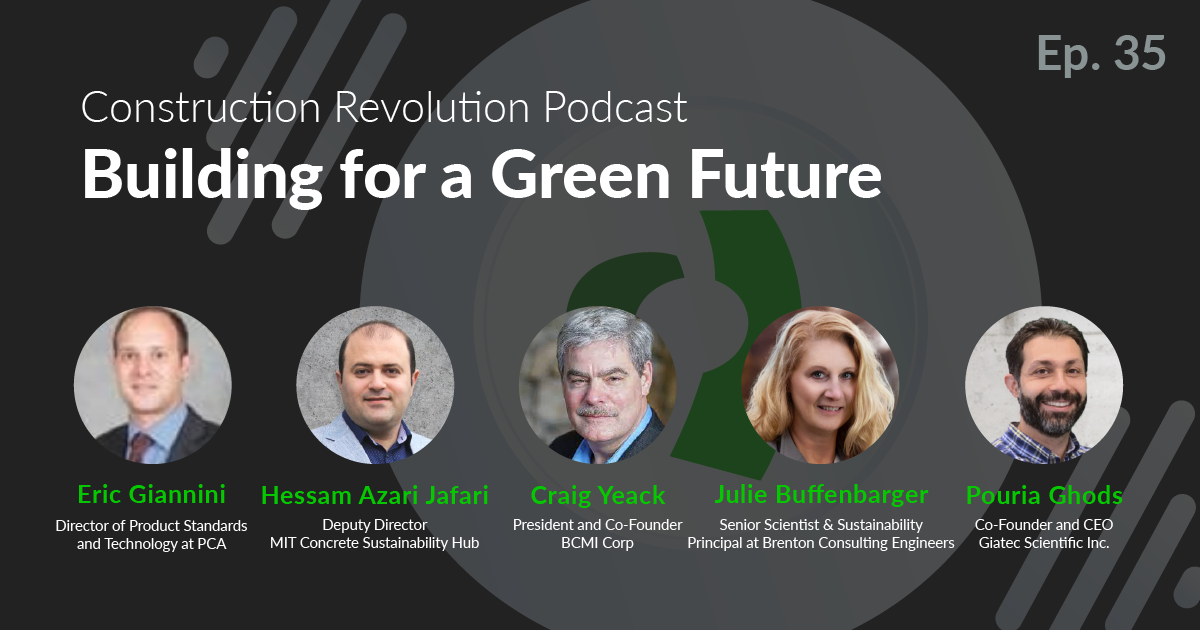
Episode 35 |
January 2, 2024
Decarbonizing the Construction Industry
In this episode of The Construction Revolution Podcast, you’ll hear from construction industry experts as they explore the future of green construction and share their vision for a more sustainable built environment. This panel discussion was originally recorded in March 2023, at the Net Zero Construction Conference. To hear more insightful conversations like this one, don’t miss the 2024 Net Zero Construction Conference. Stay up to date with announcements about the conference by following the Net Zero Construction Conference on LinkedIn or by signing up for the newsletter on the Net Zero Construction Conference website.
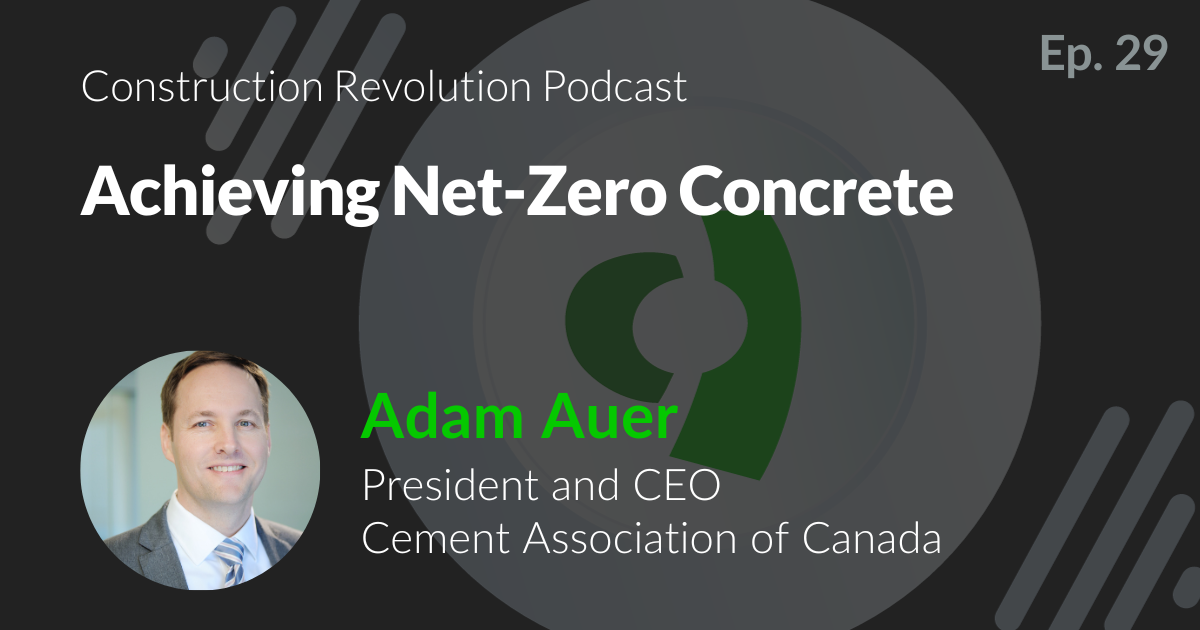
Episode 29 |
August 3, 2023
In this episode of The Construction Revolution Podcast, we sit down with Adam Auer, the President and CEO at the Cement Association of Canada (CAC). Adam has over 20 years of experience in environment and sustainability, 11 of them being at the CAC. The CAC represents five cement companies with clinker and cement manufacturing facilities across Canada, collaborating with governments, academics, environmental groups, construction professionals, and broader society as well as industry stakeholders to help foster sustainable change and growth. We’ll discuss how through the CAC’s Concrete Zero Report concrete producers can achieve net-zero concrete. Additionally, we’ll talk about sustainability in the construction industry and the challenges that the industry faces to reaching climate goals. If you’re interested in learning more about sustainability in the construction and concrete industries, be sure to check out the CAC’s website as well as Giatec’s Net Zero Construction Conference.
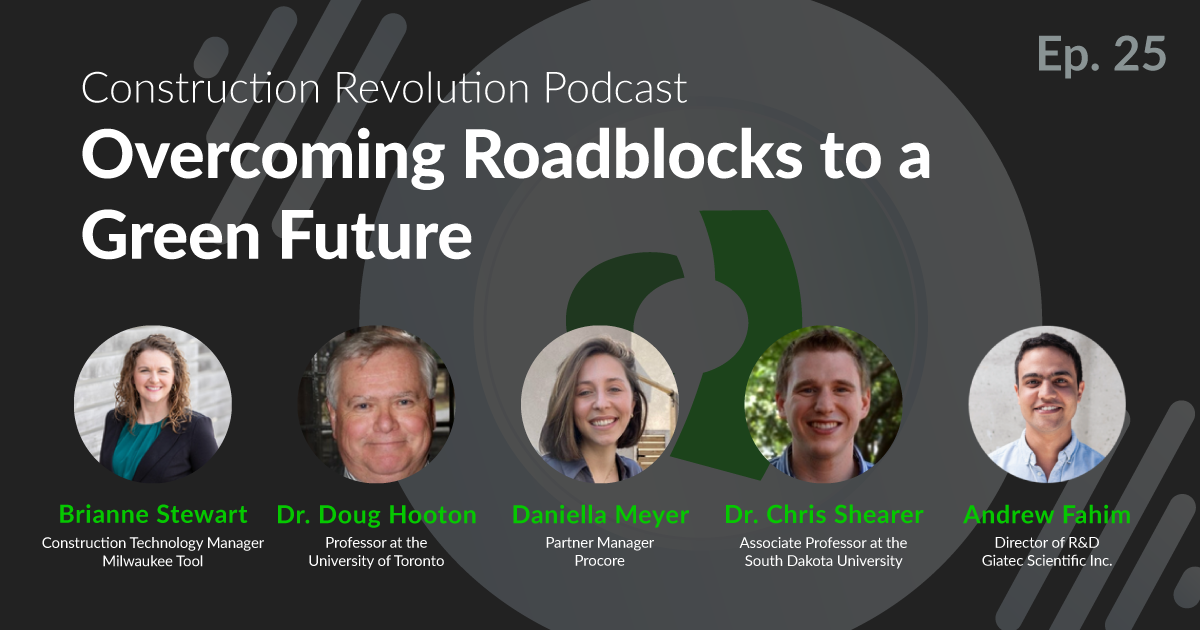
Episode 25 |
February 7, 2023
Overcoming Roadblocks to a Green Future
In this episode of The Construction Revolution Podcast, you’ll hear from industry experts on the challenges of sustainable construction and how the industry can work together to overcome these roadblocks. This panel discussion was originally recorded in March 2022, at the NetZero Construction Conference. To hear more insightful conversations like this one, don’t miss the upcoming 2023 Net Zero Construction Conference. Registration is open now!
Want to Be a Guest Speaker, Sponsor, or Just Have a Question for Us? Fill In the Form!